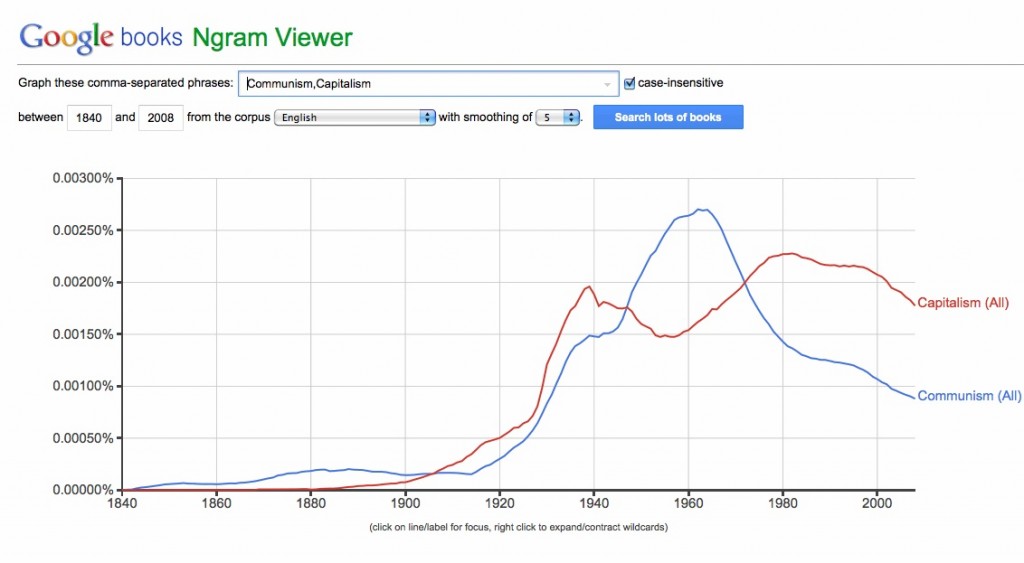It turns out that the history of the Cold War is best told not in books, but in graphs about books.
Google has an obscure new feature called “Ngram Viewer,” which allows users to search for individual words, or “grams,” as they appear in over 5.2 million digitalized books stored in the Google database. Users have the option to search for words in more than a dozen languages, even discriminating between British and American English.
The search function also allows users to modify particular words to do things such as determine when certain forms of words fell into and out of popularity (such as when “tackle” was used as a noun instead of a verb). By adding wildcards or modifiers, users can search for things as diverse as the popularity of slacks versus dress pants to which Internet operating system was most prominent.
Ngram Viewer searches from books written from over 600 years ago to the present day. The x-axis represents years in chronological order; the y-axis represents the percentage of books that a particular word or phrase appears in during that given year.
In a search of books between 1840 and 2008 in the English language, entering the terms “communism” and “capitalism” reveals a telling graph. At first glance, these data plots appear to create two insignificant lines. But combined with our knowledge of 21st century events, it becomes a surprisingly accurate graphical depiction of one of the defining struggles of modern times.
Communism first appears to overtake capitalism in 1947, where the red and blue lines intersect. This point coincides precisely with the announcement of the Truman Doctrine, signaling the beginning of the “containment” strategy that would consume much of the next four decades.
Communism appears to reach its apex on the graph in 1963 during the Kennedy administration, just two years after construction began on the Berlin Wall. Also of significance during this time was the introduction of a hotline between Moscow and Washington, enabling direct communication between the two Cold War powers for the first time. After the president’s assassination, communism begins a fatal free-fall from which it will never recover. In 1964, Leonid Brezhnev succeeds Nikita Khrushchev as Chairman of the Communist Party of the Soviet Union.
Capitalism finally appears to regain the upper hand against communism in 1971, around the time of the death of Khrushchev. Significant during this time is President Nixon’s visit to China in 1972, the first time an American president had visited the communist nation.
Finally, in the early 1990s, the area between the two curves is the greatest, signaling the vanquishing of the Soviet Union. After the Malta Summit between Soviet Premier Mikhail Gorbachev and President George HW Bush in December 1989, perhaps the most symbolic sign of the fall of the Soviet Union was the opening of a McDonald’s in the heart of Moscow on January 31, 1990.
While compiling a graph of words found in books of a particular language and attempting to ascribe some geopolitical significance to them may constitute a form of lingual bias, the uncanny similarity between the types of books written during the Cold War and the actual events therein is remarkable. Google’s Ngram Viewer is an important tool for analyzing society and discovering who we really are as a people.
Can one book predict the fate of the world? Perhaps not. But can millions of authors from around the world over the course of dozens of years accurately portray the consciousness of a people? Deus ex machina.


Id est quod id est.